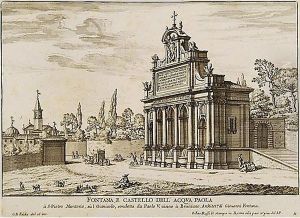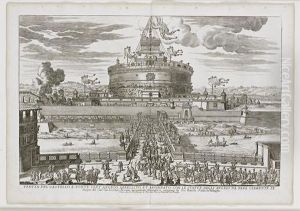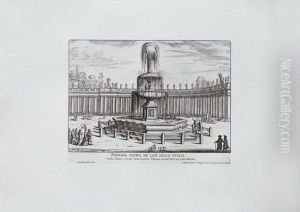Giovan Battista Falda Paintings
Giovan Battista Falda was an Italian artist and engraver, born in Valduggia, a small town in the Piedmont region of Italy, in 1643. He is best known for his detailed engravings of Rome, capturing its buildings, gardens, and squares during the Baroque period. Falda's work provides a valuable historical record of the city's architectural and urban development in the 17th century. He moved to Rome at a young age, where he became a protégé of Giovanni Giacomo De Rossi, a prominent publisher of the time. Under De Rossi's guidance, Falda's talents flourished, and he became one of the most celebrated engravers of his day.
Falda's engravings were collected in several volumes, among them 'Le Fontane di Roma' (The Fountains of Rome), 'Le Fontane nei Palazzi e ne' Giardini di Roma' (The Fountains in the Palaces and Gardens of Rome), and 'Il Nuovo Teatro delle Fabbriche, et Edificii, in Prospettiva di Roma Moderna' (The New Theatre of Buildings and Structures in Perspective of Modern Rome). These works not only showcased Falda's skill as an engraver but also his keen eye for detail and his ability to capture the essence of Baroque Rome. His engravings served as a guide and inspiration for architects, artists, and travelers of his time and later periods.
Falda's influence extended beyond his immediate era, contributing to the field of urban planning and architecture. His detailed maps and views of Rome were used by scholars and historians to understand the development of the city's urban landscape. Despite his relatively short life, Falda's legacy endures through his detailed and precise depictions of Rome. He died in 1678, leaving behind a body of work that continues to be studied and admired for its artistic merit and historical significance. Through his engravings, Falda has provided future generations with a window into the Baroque period, capturing the architectural beauty and urban complexity of Rome in the 17th century.


